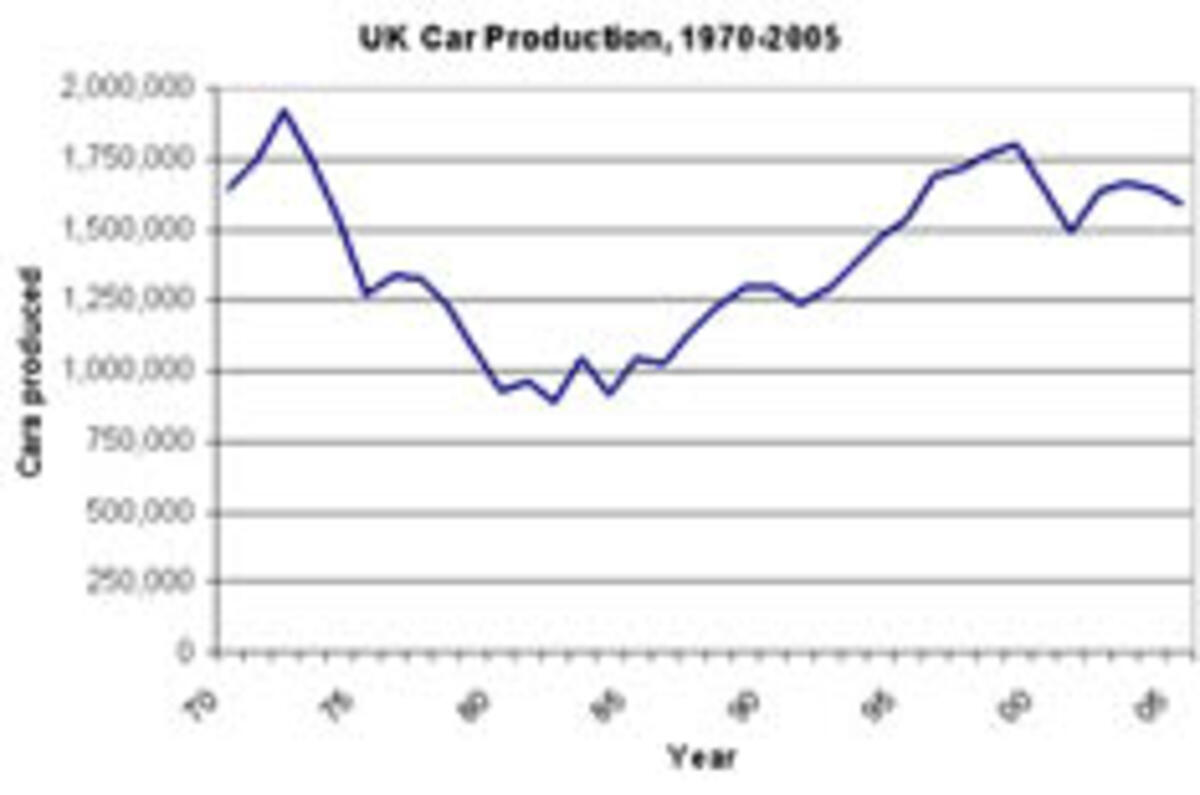The Office for National Statistics figures for 2005 reveal that, despite the death of MG Rover, UK car production fell by only 51,053 units from the 2004 total. Considering MG Rover accounted for 77,000 units, that represents a net gain of 1.7%.
Exports now make up more of the UK's car ouput than ever before at 74.2% of the total. This is partly a result of the closure of Longbridge: most of MG Rover's production sold here rather than abroad.
BMW's MINI plant at Oxford, Toyota's at Derbyshire and Nissan's in Sunderland are the top three producing sites in the UK by numbers and increases in them. Sunderland is down from 331,924 in 2003, but is gearing up to manufacture the Note; Oxford has ramped up from 174,191 to 200,163 and Derbyshire has gone from 210,617 units in 2003 to 264,279 in 2005.
Considering the decline and fall of the indigenous UK car industry, it might be surprising to realise how car production in the UK has risen from the low point of 1983, which saw only 887,679 cars made here. The general trend has been upwards since then, albeit with regressions in the early '90s and Noughties.
None of that good news erases the downward slide from 1,921,311 units in 1972. Yet when one considers the efficiency and reduced environmental impact of today's UK plants and the relatively high costs of labour and parts in the UK, SMMT Chief Executive Christopher Macgowan's statement that 'the UK is still a great place to make high quality cars' is clearly not without justification.





Add your comment